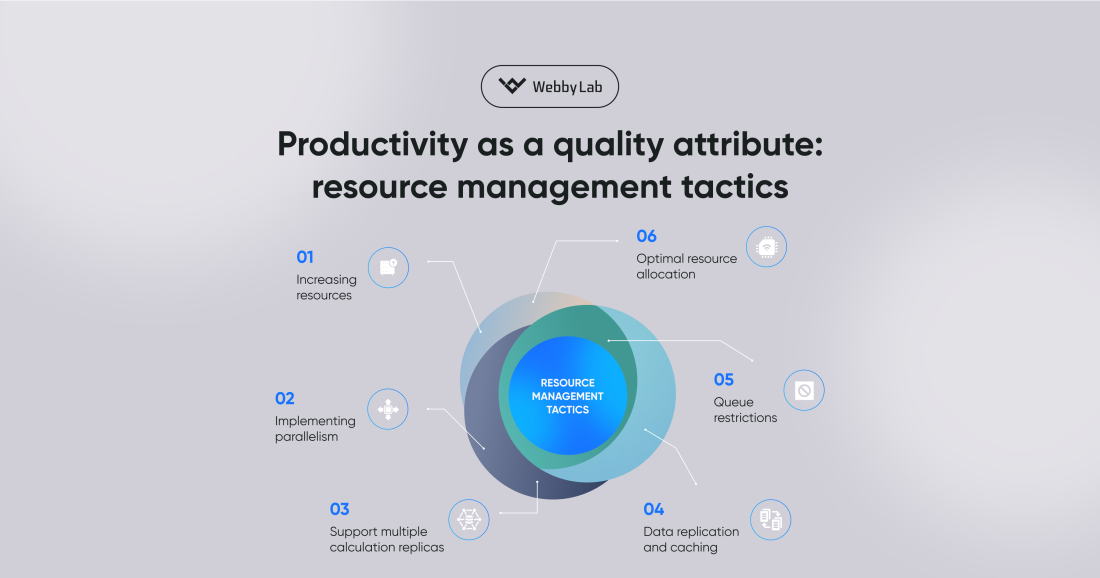Productivity as a quality attribute: resource management tactics
Performance is a fundamental quality attribute that determines the efficiency and reliability of a system.To ensure high performance, the following resource management tactics should be used:
1. Resource augmentation.This tactic involves scaling up existing computing and communication facilities, such as processors, network cables, and storage devices. This can quickly improve performance, but is expensive and not always the best solution.
2. Implementation of parallelism. By dividing a single task between several processes or threads, you can achieve better utilization of available resources, significantly reduce delays, and increase performance.
3.Support for multiple copies of computing. Server replication and the use of load balancing principles (for example, with circular distribution of requests) allow you to effectively distribute requests and scale resource utilization.
4.Data replication and caching. Data duplication and redundancy tactics allow parallelizing the service of several simultaneous requests, while caching allows you to get the most relevant information faster by storing it in a fast-accessible environment.
5.Queue limitation. By controlling the number of requests waiting to be processed, you can prevent system overload.
6.Optimal resource allocation.The tactic refers to the systematic use and allocation of processors, buffers, and networks.
Choosing the right allocation strategy can minimize conflicts and maximize system efficiency. Why is it important? Properly implemented resource management tactics help create a system that:
- Withstands a high load without losing performance.
- Responds effectively to changing requirements.
- Ensures high speed and stability of work.
Resource management is not just about costs or capacity, it’s about a strategic approach to creating productive, reliable, and scalable systems.



